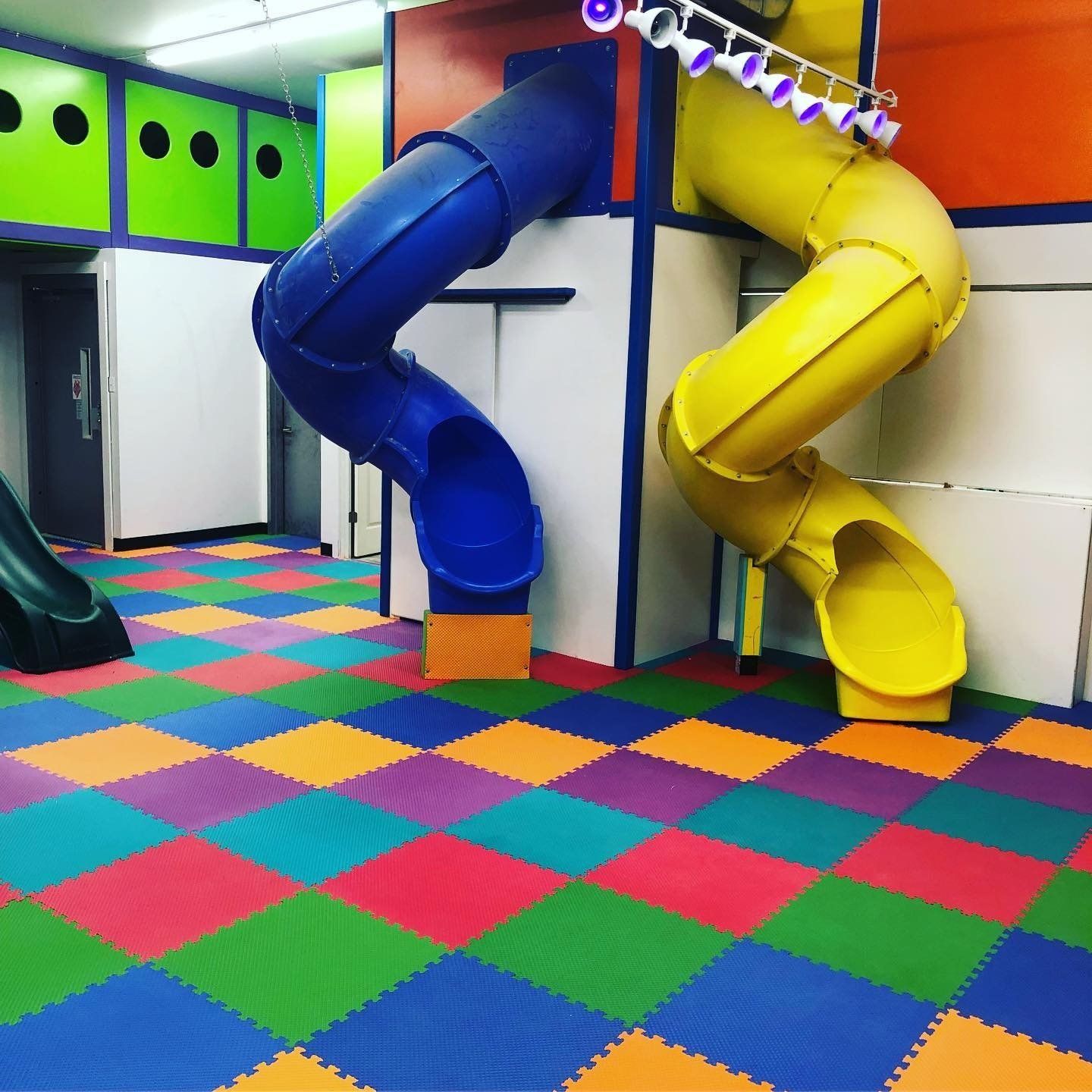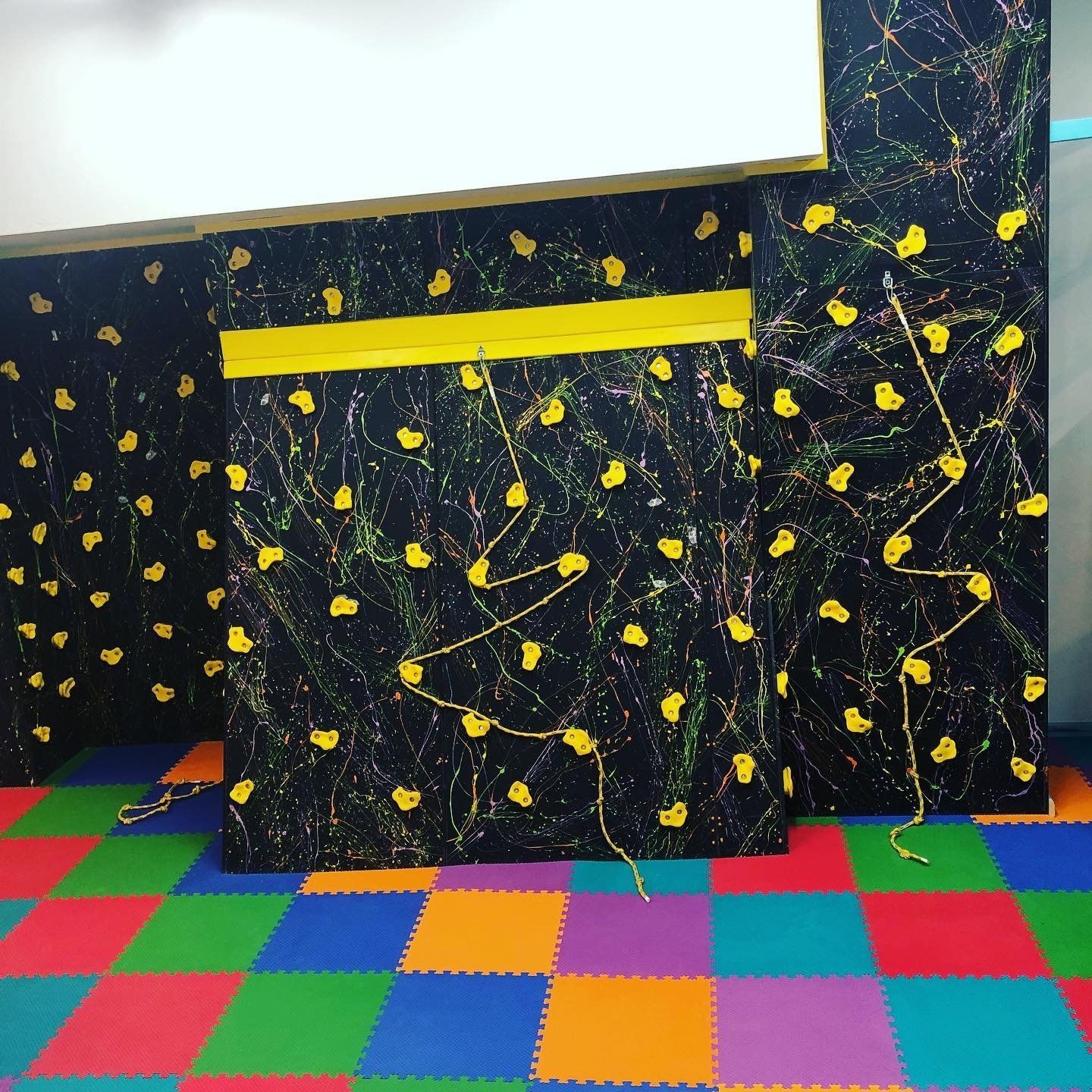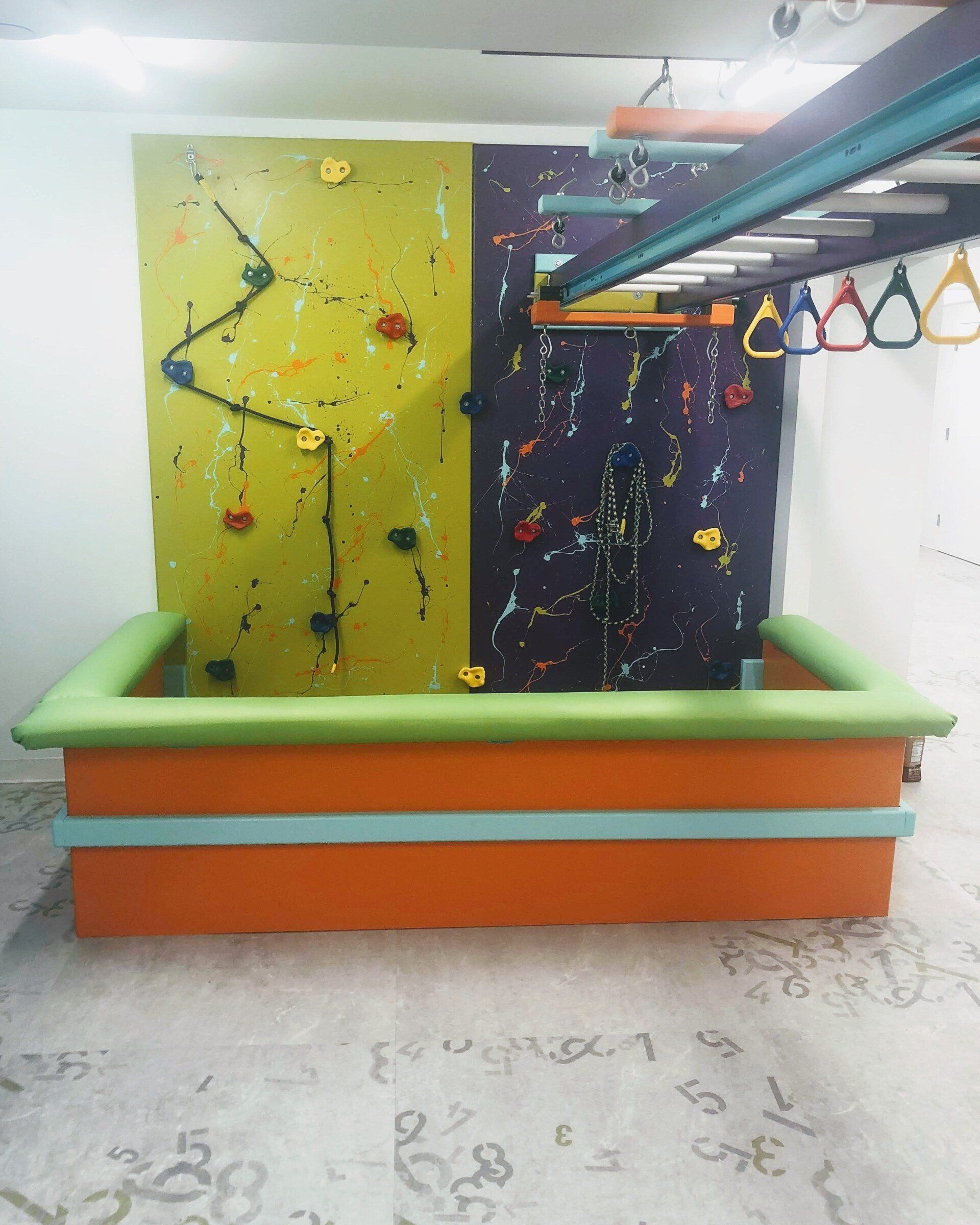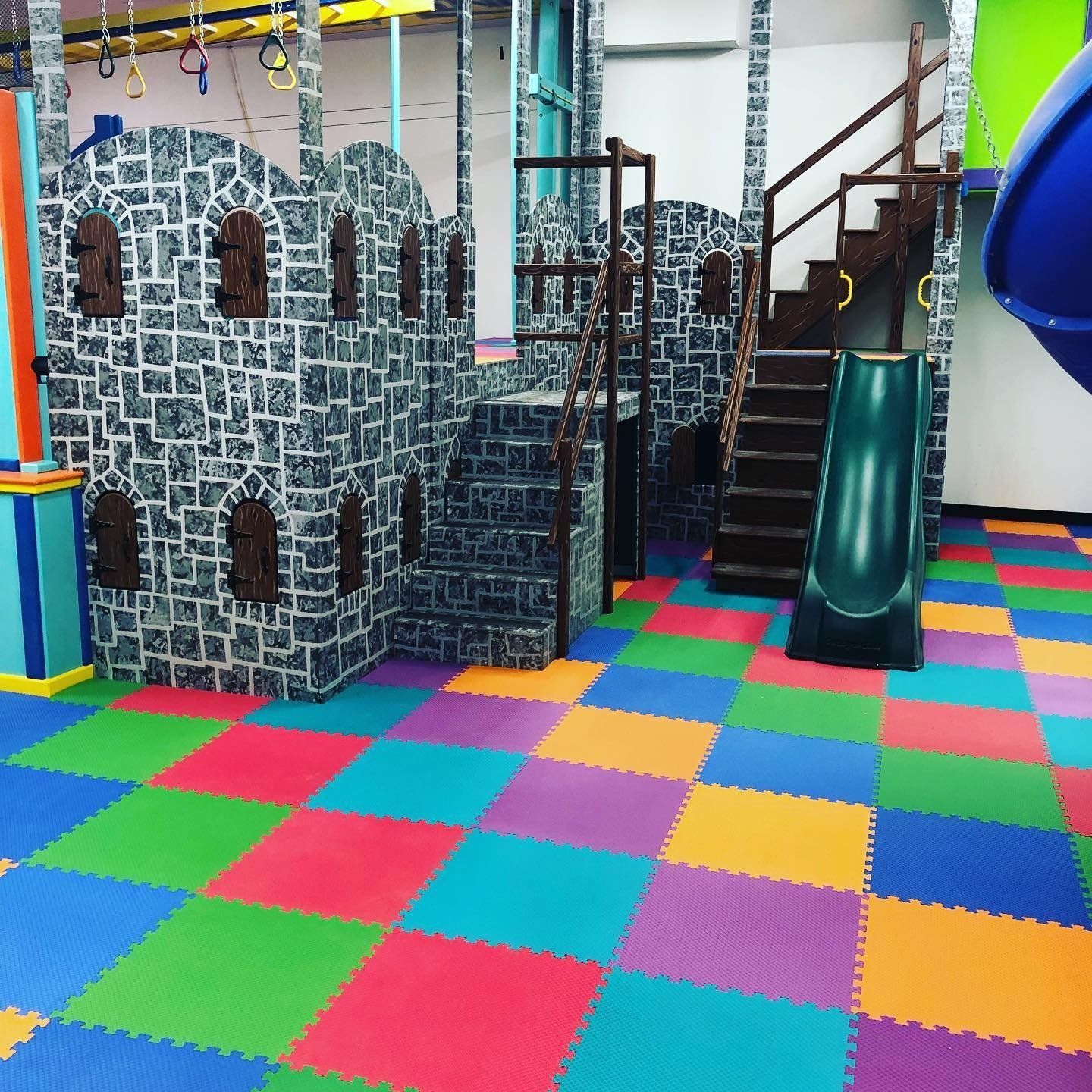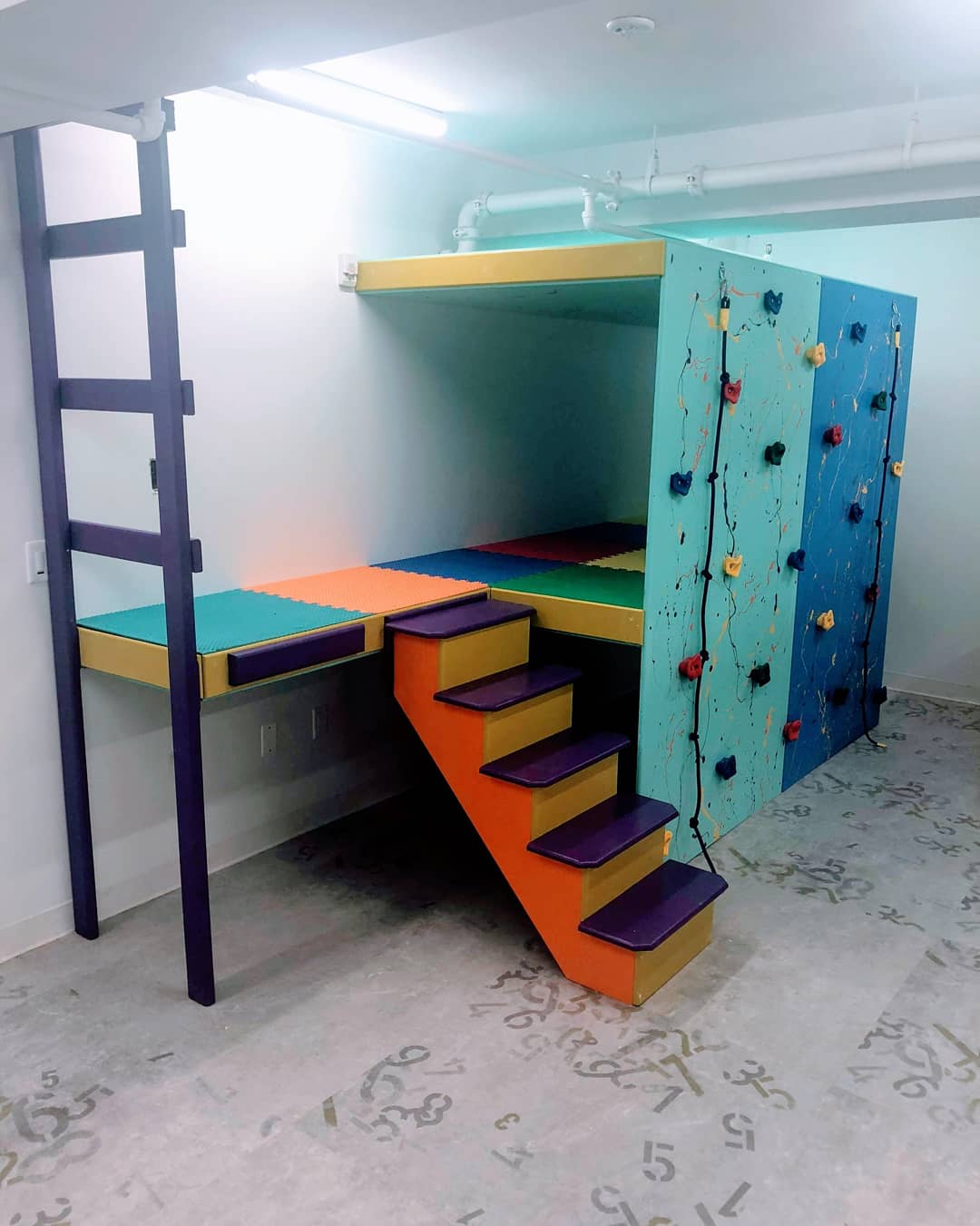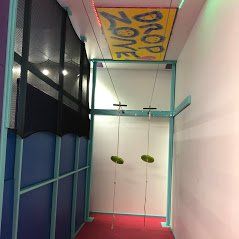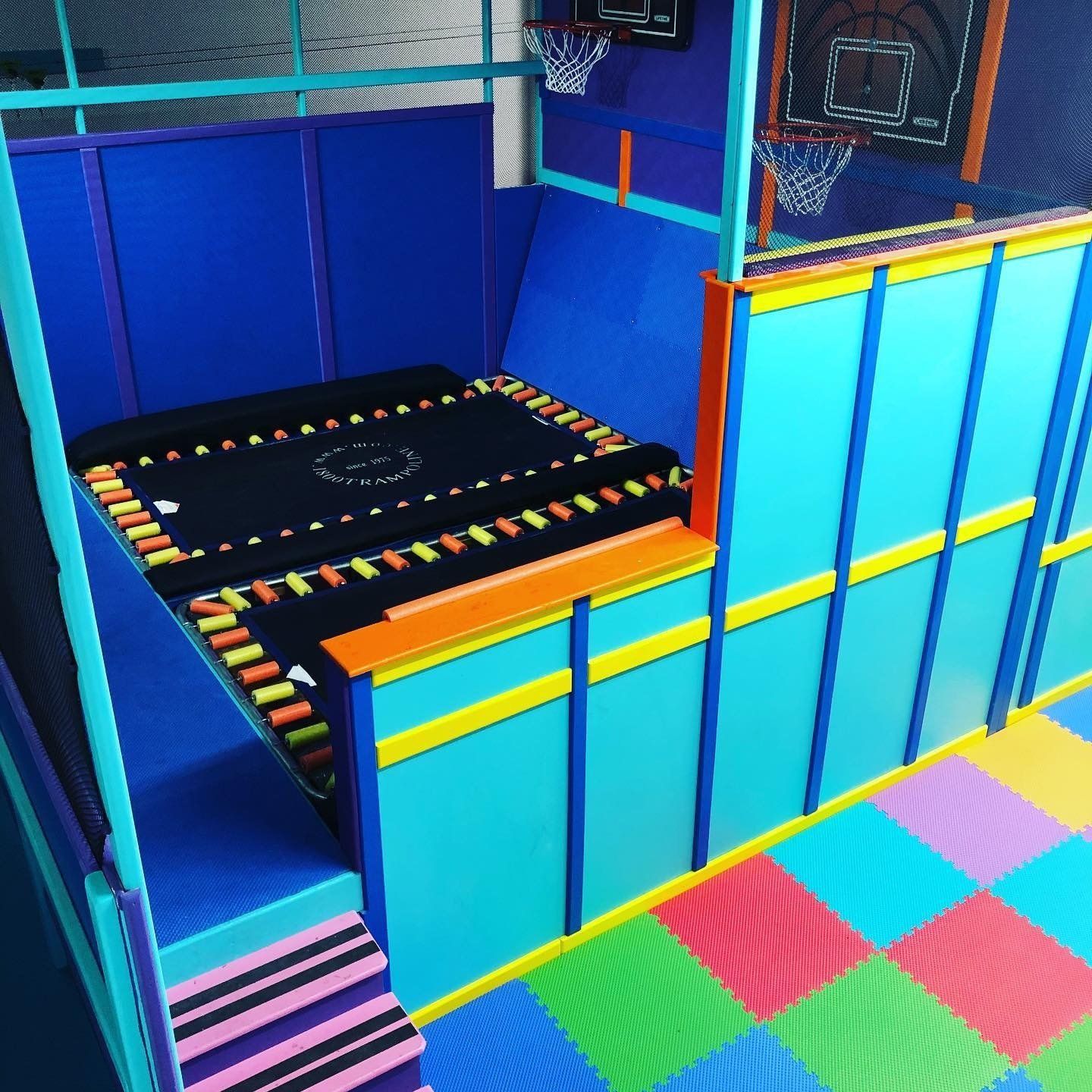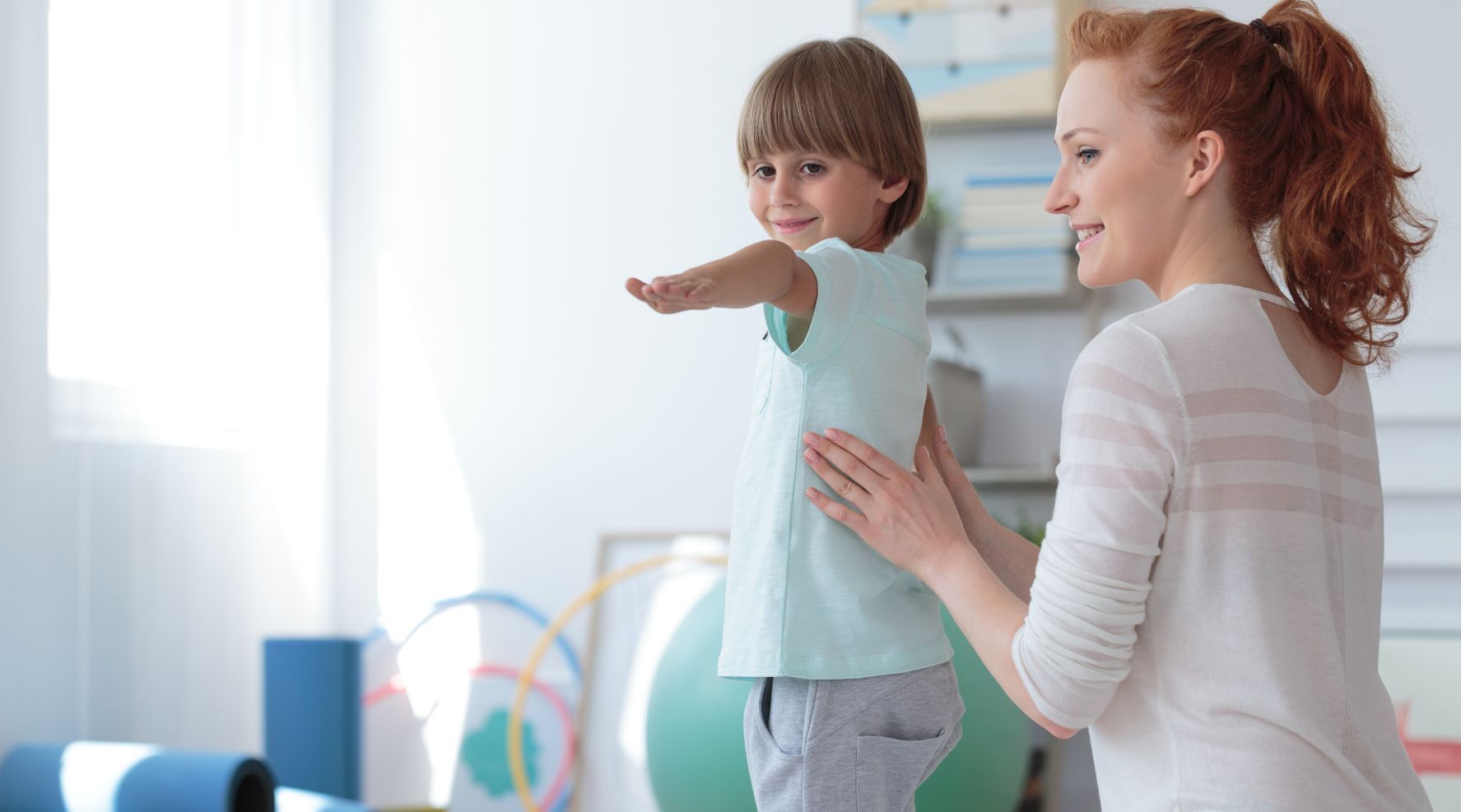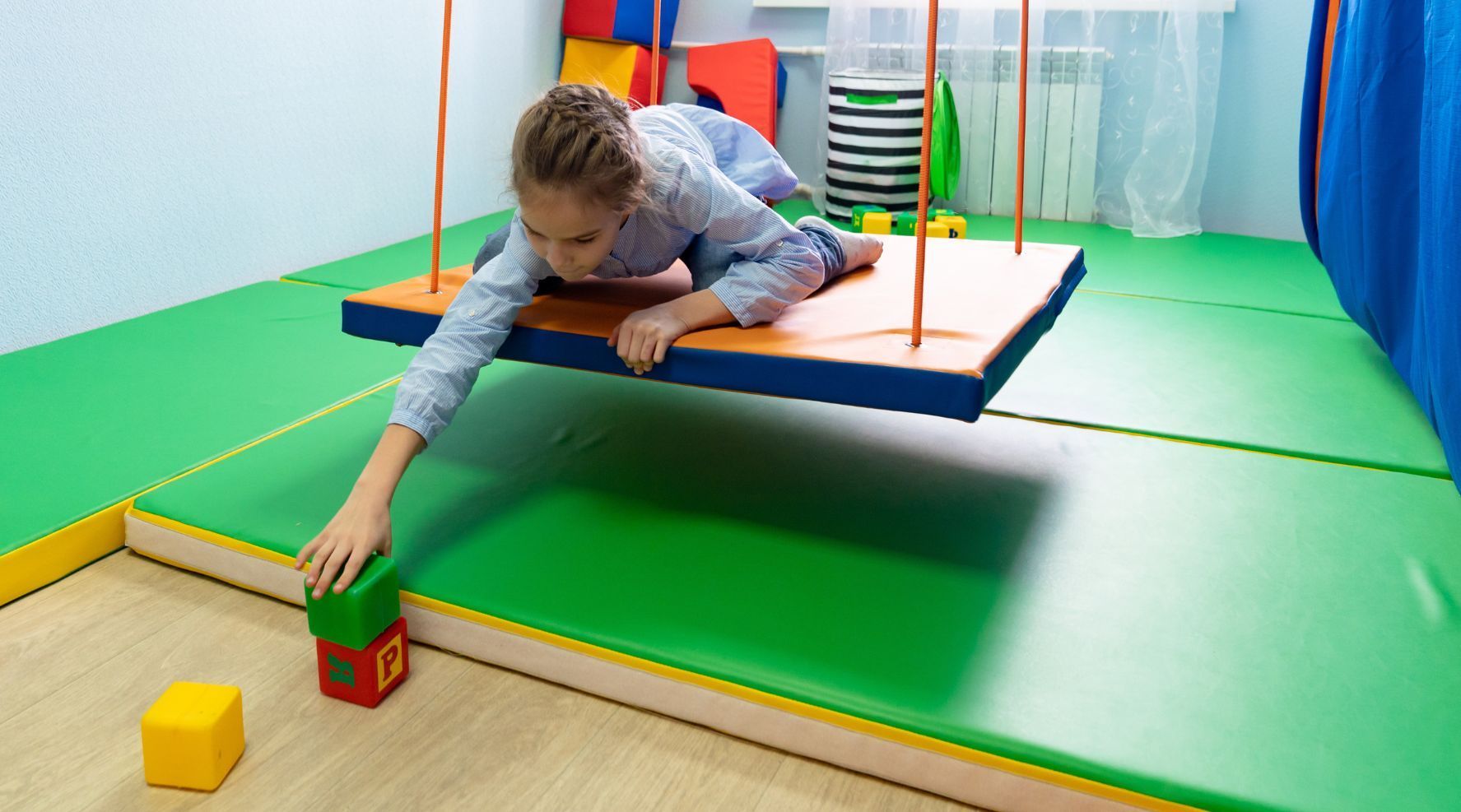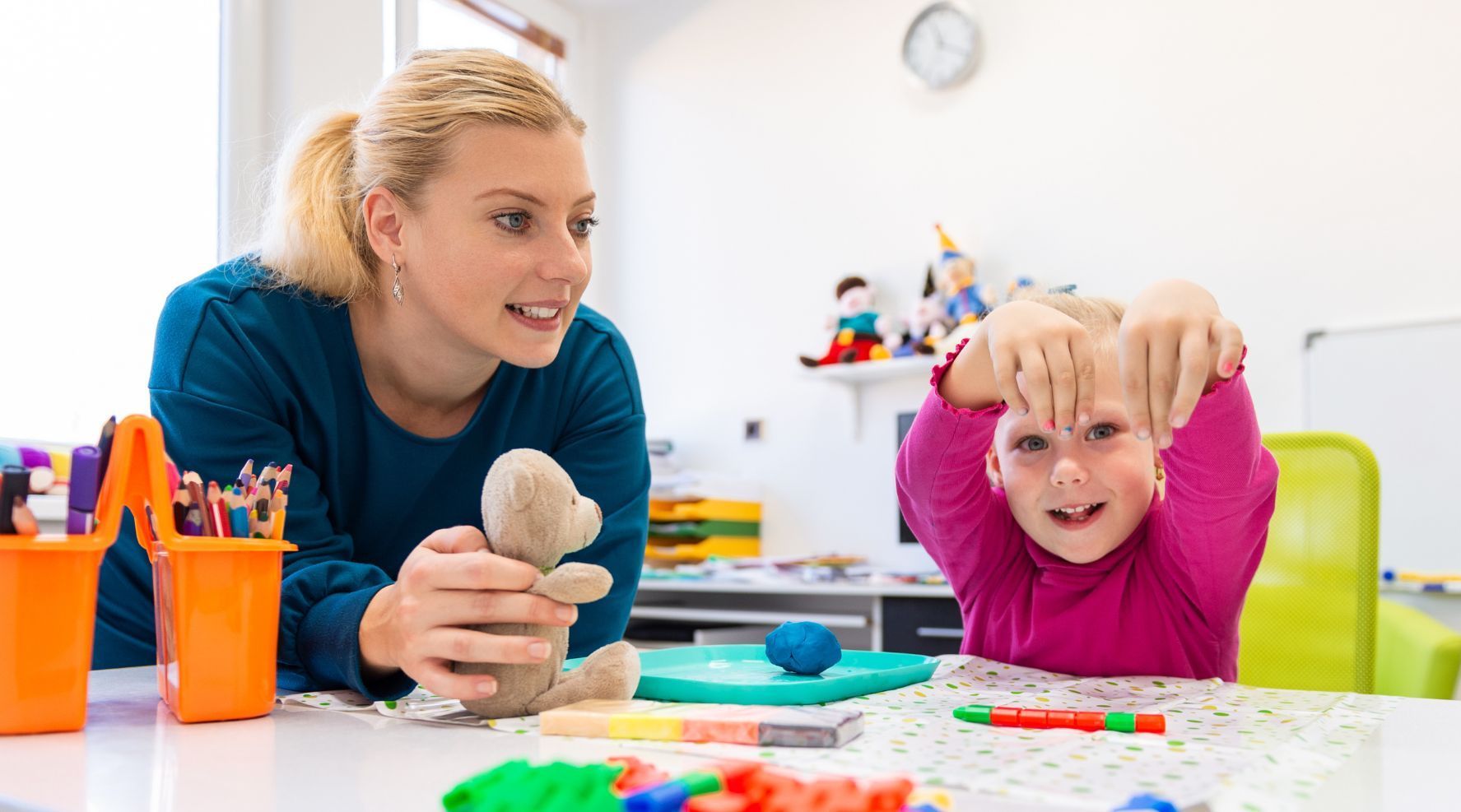Sensory Success For a Firm Foundation
The "sensory gym" has developed a high demand from therapists due to the critical role it plays in their treatment plans, allowing them to do a range of therapeutic exercises throughout their play space. Sensory gyms help to foster independence, reduce social stress, and acclimate your child to new stimuli safely. Royalty Sensory Gyms understands that having a variety of sensory equipment in your play space can get overwhelming having to maneuver around it all and not knowing where to store everything. Our state-of-the-art custom therapeutic sensory gyms are designed to utilize every inch of floor space to the best of its ability, while allowing therapists to expand and amplify their therapeutic exercises with the children.Below I’ve listed the best pieces of equipment that Royalty Sensory Gyms uses for their custom-built sensory gyms and the benefits that each piece of equipment has to offer!
Swings:
- Vestibular Sense- A developed vestibular system allows us to navigate our environment with confidence because our brain knows exactly where the body is in relation to other objects. Swinging allows a child to put their body in a position that forces the vestibular system to acknowledge the different sensations being processed like the wind against their face and butterflies in their stomach.
- Spatial Awareness- When your child sits in the therapy swing, the fabric puts pressure on their sensory receptors. This proprioceptive input is called deep pressure therapy. This input benefits your child by allowing them to feel their body’s movements. They can sense when their arm is outstretched or when their knee is bent. This sensory information gives your child a better understanding of their body’s location.
- Strengthens Muscles- Swinging benefits muscle tone as different swinging positions can be used to target different muscle groups. To strengthen their head and neck muscles, have your child swing on their stomach. If your child suffers from weak core muscles, try rolling up the fabric like a normal swing. The lack of back support will strengthen abdominal muscles and improve posture.
Slides:
- Promotes Balance and Coordination- As a child pushes themselves down the slide, they are building valuable balance and coordination skills. Sliding helps the child to develop spatial awareness, as they must judge when it’s a good time to slide and when to put their feet down once they reach the bottom of the slide.
- Gross motor skills- Slides are a great motor activity because they require a child to climb the stairs of the slide, balance on one foot, and shift their weight during stair climbing.
- Encourages Positive Social Skill Development- Everyone always wants to use the slide! At a busy playground, the slide is always the main focus for most children. When kids are playing together, the slide is a great way to help children learn important social skills like cooperative play, sharing, taking turns, and physical abilities. These skills will have a lasting impact on their social interactions as they continue to develop!
Monkey Bars:
- As a child climbs up our ladder and across the monkey bars, they’re enhancing their body’s awareness, fine motor planning, bilateral coordination, core strength, and hand strength. A child may be guided by a therapist at first while climbing on the monkey bars but over time they’ll gain a sense of confidence and independency allowing them to climb freely without any help.
Rock Walls:
- Problem Solving- As a child navigates their way from one side of the rock wall to the other, they feel a sense of accomplishment. Their brain is problem solving as they figure out which way is easiest for them to get across the rock wall.
- Physical strength- Kids develop hand and finger strength as they grasp and hang onto holds of all different shapes and sizes. As they maneuver their way across the rock wall this requires a great deal of core, leg, and arm strength too as they try to keep their balance.
- Bilateral Coordination- When kids are climbing, they use both sides of their body together, usually in an alternating pattern. They also learn how to differentiate between the movements on either side of their bodies. They stabilize themselves with one foot/hand while motor planning how to grasp onto and step on the next rock with their foot/hand.
Ball Pits:
- Improve Motor Skills- When sitting in a pool of balls, young kids can pick up and handle the balls to sharpen their fine motor skills which won’t yet be developed. Catching the balls in the ball pit for a toddler will be an effective test of their fine motor skills at work. When they toss the balls up or to a partner, they’re using gross motor skills as well.
- Reduce Stress and Anxiety- The balls provide deep pressure therapy by massaging the entire body, providing buoyant support, giving the child a deep-pressure sensation, and encouraging relaxation.
- Visual/Tactile Senses- The brightly colored balls inside a ball pit create a rainbow sea of fun and entice people of all ages into the therapy environment! The array of brightly colors targets the child’s visual sense and as they touch the balls, it helps to develop their tactile sense.
Seclusion Area:
- Calming- Seclusion areas help a child to regulate their emotions when they’re experiencing sensory overload. These areas are often dimly lit with incandescent lighting or natural lighting.
- Speech Therapy- Therapists can practice speech therapy with the child if a white board is attached in the seclusion area or they can read a book as another way to practice speech therapy!
Jump Deck:
- Gross Motor Skills- Jumping from a jump deck into a ball pit, develops a child’s leg strength and balance. It requires coordination of upper and lower extremity movements as the child takes that leap.
- Independence- Jump decks allow a child to conquer their fears in a safe environment. A therapist may need to assist the child their first few times leaping into the brightly colored ball pit but over time the child will gain confidence, eventually being able to do it without any assistance!
Ninja Ramp:
- This piece of equipment is great for developing your gross motor skills, building strength in your upper/lower body. It also helps to develop grip strength along with their coordination as they pull themselves up the ninja ramp.
Zipline:
- The zipline is a great way to build upper extremity strength, muscle endurance, enhance the ability to integrate and tolerate movement. This piece of equipment helps to build the child’s confidence and grip strength as they zip line from one end of our monkey bars into a ball pit on the other end.
Trampoline:
- Gross Motor Skills- Bouncing on a trampoline creates a constantly shifting center of gravity, which kids must quickly respond to by adjusting their body’s position and bilateral movements. Coordination is developed through jumping, along with the strengthening of bones and joints.
- Learning- Jumping allows a child to feel more relaxed and improves their concentration. The trampoline can be an effective and engaging tool for learning. Counting, jumping onto colored shapes, and following directions are just some of the ways a child can learn through play.
- Strong Immune System- Bouncing on a trampoline is great for detoxifying the body and strengthening the immune system, as it stimulates internal organs and promotes lymphatic circulation. It pushes toxins out of cells and allows nutrients in.
These different types of sensory equipment allow therapists to amplify their treatment plans and be able to treat the whole child. Royalty Sensory Gyms is here to help you change the lives of kids/adults throughout the whole spectrum! These state-of-the-art sensory gyms not only have an everlasting impact on kids/adults but also on the therapists, making therapy FUN and easier for them!
Resource: Specialty. School. and Rock Climbing In Winston Salem- For Many Benefits! says: "The Benefits of Rock Climbing for Climbing for Children with Special Needs." Schoolyard Blog / Teacher Resources / School Specialty. 23 Aug. 2018
blog.schoolspecialty.com/benefite-rock-climbing-children-special-needs/.


